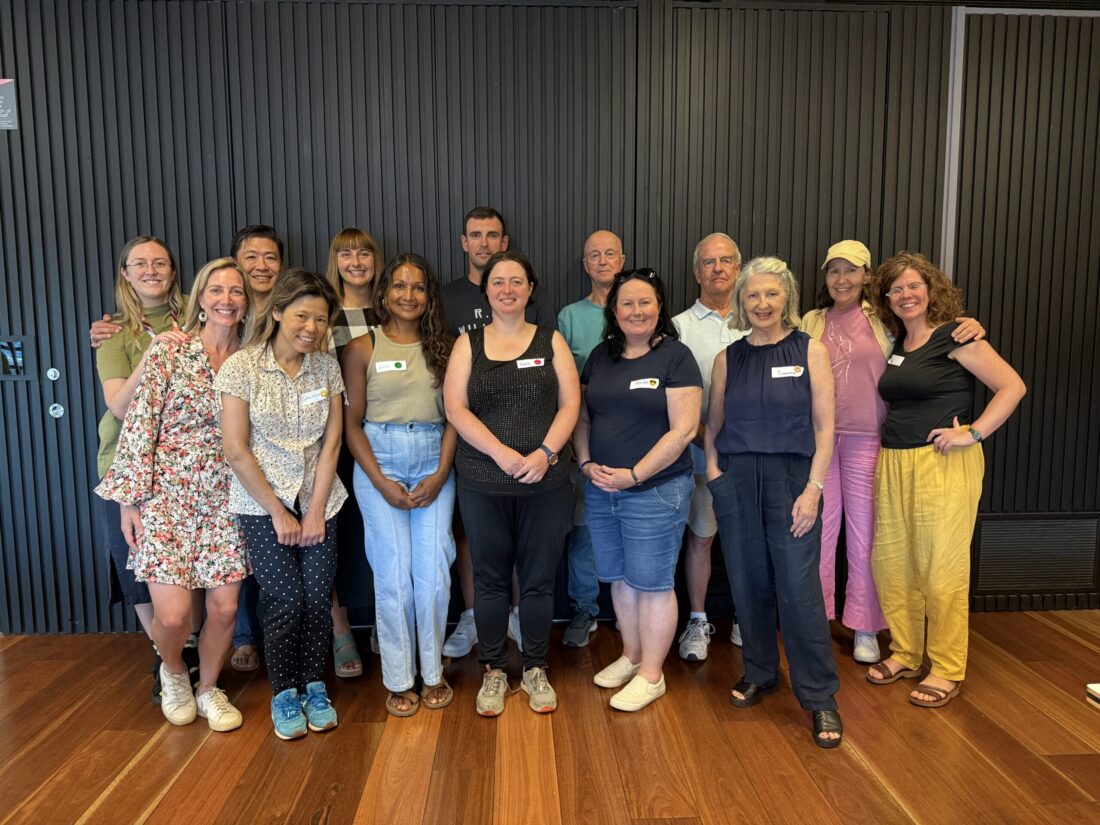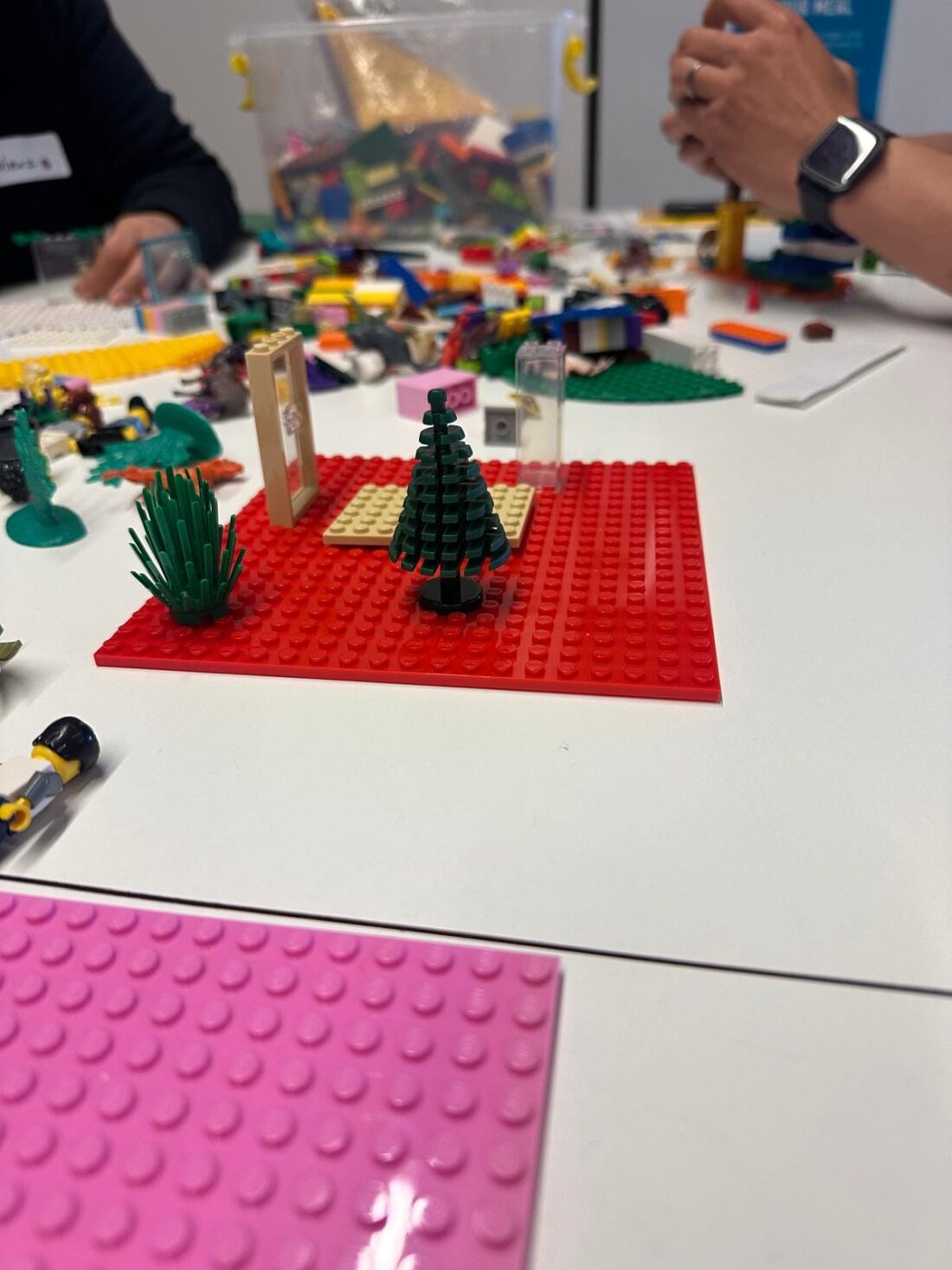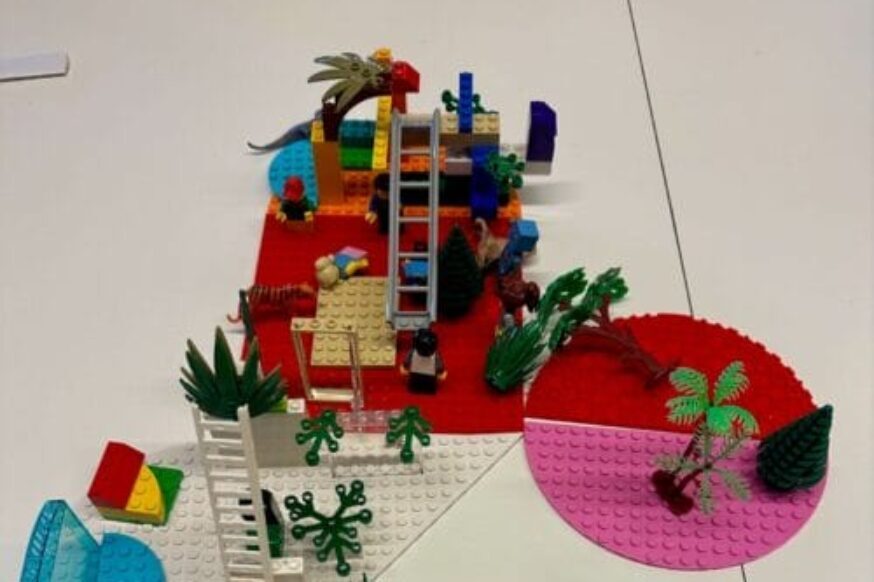In Melbourne’s urban high-rises, it’s easy to live anonymously. Many residents choose these towers exactly for that reason. But in the face of a climate crisis that demands we know and care for each other if we are to thrive, can strangers become neighbours, and neighbours become champions of a more resilient city?
That’s what we set out to explore through Rising Resilience, an initiative by the Centre for Public Impact (CPI) in collaboration with Humanise This and the City of Melbourne, funded by CPI’s Climate Change Initiative (CCI). Together, we sought to determine whether social imagination — the collective practice of envisioning alternative, better futures — could serve as a foundation for climate resilience.
The following is a high-level overview of the themes we identified in our evaluation of the programme, as well as the live questions we continue to grapple with.

Who we engaged, and why this work felt different
We worked alongside a group of residents from Melbourne to reimagine their roles as citizens and champions of community resilience, a critical part of sustained climate resilience. These were everyday citizens from all walks of life, many of whom had never been asked to imagine an alternative reality or future for their neighbourhoods, or to believe they could take steps to create it.
This kind of work is more common with community or non-profit leaders and others already in positions of power and influence. It’s much easier to convince a funder that outcomes and tangible change are likely when working with a group that has agency and resources.
In Melbourne, we set out to build the agency of those who had not yet imagined a different reality. We were driven by the realisation that our current reality, shaped by past imaginations, is not helping us build the futures we need. We wanted to know whether different imaginations might open up new possibilities for climate resilient futures.
These key questions guided our work:
- How might we work alongside individuals to reimagine their role in the social infrastructure we believe will be so critical to the thriving of tomorrow’s Melbourne?
- What might social or collective imagination practice offer us in this quest?
Imagination as the missing piece in climate resilience
The climate crisis has been described as a crisis of imagination, where we struggle to envision alternatives to our current situation, beyond the stories of doom we read about in the news every day or in science fiction. As a result, we’ve been unable to imagine a way out of this crisis.
To develop the kind of deep social imagination needed to tackle climate challenges, we must create spaces for consistent and playful questioning that are open to everyone, regardless of their role, demographic, or tenure. When people with diverse knowledge and power come together to imagine, learn, and collectively take on challenges, the impact can be even more powerful.
The slow work of building connection, kindness, and compassion in dense environments
The residents we worked with lived in high-rise buildings in the City of Melbourne, one of the most densely populated areas in Australia. These environments often brought transience and anonymity, compounded by security measures that limited opportunities to meet other residents.
For some, this was by design: after long hours in high-pressure jobs, their home is a private sanctuary to unwind and be alone. But this isolation can weaken the social infrastructure that underpins community resilience. Over time, people in a place can develop a sense of kithship knowledge, a hyperlocal understanding of place that builds a common connection with other residents. It might be knowing which local cafe has the friendliest barista, which neighbourhood doctor has the best bedside manner, or where not to stand at the bus stop if you want to avoid getting splashed after a rainstorm. This knowledge cements a sense of belonging and connection to a place. Sharing these experiences with others lays the groundwork for relationships and reciprocity — the very beginnings of community resilience. In transient environments, however, these roots struggle to take hold. Without it, creating a sense of the collective that enables imagination becomes even more difficult.
We encouraged our participants to reflect on what they witnessed as they lived their lives and to notice aspects of resilience that already existed in the places they shared. Many found this very hard. When we asked them to map where they saw opportunities for connection or where they saw kindness in their local area, many maps were very sparsely filled. Parks, libraries and public open spaces offered some potential for connection. However, the majority of examples were often commercial opportunities masquerading as kindness (eg, 10th coffee free!).
This highlighted that in contexts of transience and density, a longer phase of building trusting relationships may be necessary before imagination work can begin to support community resilience. Perhaps kindness was so complicated to map, precisely because it primarily exists within relationships that are hard to create in this context. When they do, it takes time, which is not available to all.
If kindness, compassion and social connection (1) are core to community resilience, then it makes sense to invest in building them as part of any generative social imagination practice that activates community resilience. In our social imagination work, the importance of emphasising the long-term nature of this work in transient, high-density environments has become increasingly clear.
1. Slavich, G. M., Roos, L. G., & Zaki, J. (2022). Social belonging, compassion, and kindness: Key ingredients for fostering resilience, recovery, and growth from the COVID-19 pandemic. Anxiety, Stress, & Coping, 35(1), 1-8.

From collective imagination to collective action
Our approach to this project was to introduce social imagination practice to the participants, strengthening their imagination muscles as they began to see their worlds in different ways, and encouraging them to question social constructs.
But here we found a tension. When people start imagining changing the world, they inevitably tend to think big: about culture, systems, and entire societal shifts. However, thinking on this scale can be as overwhelming as it is inspiring, sometimes leaving people stuck in paralysis and inaction.
To counter this, we encouraged participants to design small, actionable, and imperfect experiments that they could implement and learn from, then take to the next level as they learnt more and built their sense of agency and networks. Because this invitation to take small actions is at odds with the perhaps more inspiring invitation to imagine an alternative future, we found that our participants struggled to plan modest interventions that still inspired them. Many still made audacious plans that faltered when they began to translate them into reality. Our evaluation revealed that when we created connections through mentoring sessions and conversations, participants felt re-inspired by their small experiments, and were motivated and joyful again.
There’s a delicate balance between holding an inspiring big picture and grounding it in small, achievable actions. The link between those small actions and the larger change needs to be made repeatedly, consistently, and in ways that inspire. Motivation and action reinforce each other, especially when small wins feel achievable and are connected to a bigger and more inspiring vision.
Questions we’re still exploring
This work left us with questions that continue to shape how we approach social imagination and climate resilience:
- How do we draw all people into a place where they feel empowered to imagine better futures together, and consider what it might mean for their role in society, both personally and professionally?
- What happens when all people imagine together, across sectors, classes, races, power hierarchies, and life experiences?
- Can social imagination practice unlock the connection and kindness that constitutes community resilience, or is this something that needs to be in place first?
- How can we maintain a focus on the big picture, especially in the context of climate action, without pushing people into paralysis and inaction?
- If we can seed collective imagination in communities, what might this enable in us as individuals and as a society? And what might this mean for our collective futures and our ability to tackle complex challenges together in ways that make long-term investment in this work not just worthwhile, but essential?
Imagine with us
At CPI, we believe community resilience starts with daring to imagine different futures together. If these questions resonate with you, or if you’re curious about how social imagination could shape your work, we’d love to connect. Perhaps we can collectively imagine a more thriving and resilient future for us all.




